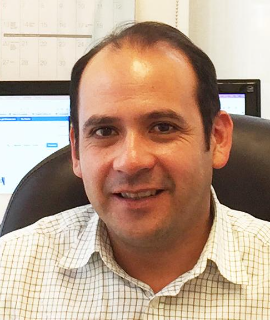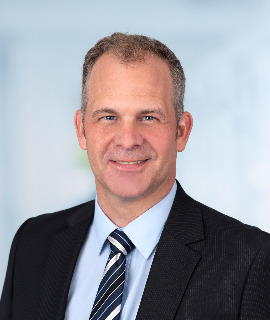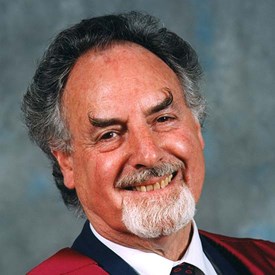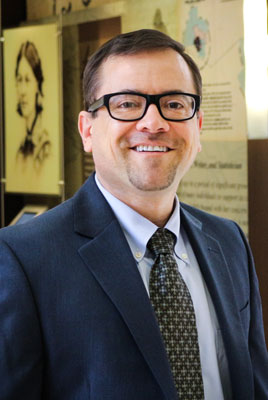Theme: Breakthroughts and Achievements in Neurology and Neuroscience
NEUROSCIENCE 2022
Conference Series LLC LTD, takes the pleasure in inviting all the researchers, scientists, academia and students across the globe to attend our upcoming annual flagship conference on 33rd World Congress on Neurology and Neuroscience scheduled for November 21-22, 2022 in Dubai UAE.
Neuroscience-2022 heartily welcomes all the renowned neurologists, neuroscientists, general internists, gerontologists, psychiatrists and physiatrists, anesthesiologists, clinicians and allied health professionals with a particular interest in neurological disorders who wish to update their knowledge of the mechanisms and treatments of these disorders, and to improve their expertise.
The conference provides an opportunity to meet and greet and to share their knowledge and experiences in their fields. There will be productive discussions as well on various topics related to all fields in neuroscience & neurology.
Scope and Importance
Most countries in the world now provide access to medical education. Neurology and Neuroscience conference provides platform to encourage people to take preventive measures and control of their health against the neurological disorders based on a full range of information and access to education in the field of diagnosis and treatment.
Track 1. Neuroscience and Neurology
Neuroscience is currently recognized as one of the most rapidly growing areas in cell biology. All human functions are influenced by neuroscience, but it also leads to a greater understanding of a wide variety of common conditions such as Down syndrome, autistic spectrum disorders (ASD), ADHD, addiction, schizophrenia, Parkinson’s disease, brain tumors, epilepsy, the effects of stroke, for example, language loss, immune system disorders. A better understanding of neurological factors will help in designing drugs and other methods to treat and avoid these and many other health conditions. Scientific advances have made it possible for neuroscientists to study the structure, functions, development, anomalies, and ways of altering the nervous system.Since neurologists treat patients with disorders affecting the brain and nervous system, there are clear signs that you should be aware of before seeing a neurologist
• Persistent dizziness
• Variations in sensations or emotions
• Difficulties with balance
• Headaches
• Emotional Confusion
• Muscle Fatigue
• Persistent sense of heaviness throughout the head
Track 2. Neurodegenerative Diseases
Neurodegenerative Diseases is a type of disease within cells of the CNS ceases functioning or die. The cells of the brain are jointly linked and miscommunications in one region may disrupt further brain functions, explaining that brain disorders can consequence in widespread issues. Even though there are numerous illnesses and diseases that can influence the brain, the most complex of these diseases are called neurodegenerative diseases. These diseases can influence an individual’s movement, speech, memory, intelligence, and much more. As neurodegenerative diseases are so complex, the root of various diseases remains a question. Neurodegenerative disorders generally get adverse over time and have no heal. They may be genetic or be caused by a malignancy or stroke. They also occur in persons who consume huge quantity of alcohol or are exposed to certain viruses or toxins.
· Alzheimer’s disease and other dementias
· Parkinson’s disease and PD-related disorders
· Prion disease
· Motor neuron diseases
Track 3 : Brain Structure and Function
The brain has three main parts: the cerebrum, cerebellum and brainstem. Cerebrum is the biggest portion of the brain and contains of left and right hemispheres. It executes major responsibilities like interpreting touch, vision and hearing, as well as emotions, fine control of movement, speech, reasoning and learning.
.Attention and concentration
· Self-monitoring
· Organization
· Motor planning and initiation
· Awareness of abilities and limitations
· Personality
· Mental flexibility
· Inhibition of behavior
Track 4. Geriatric Psychiatry and Neurology
Geriatric psychiatry, also called as neuropsychiatry, psychogeriatric or psychiatry of old age is a subspecialty of psychiatry dealing with the study, prevention, and treatment of mental disorders in humans with old age.Geriatric neurology is the discipline of medicine which studies neurologic disorders in aged people.
Neuroimmunology as a distinct field has its origins in the fields of neurology, psychiatry and immunology. Although neuroimmunologists initially concentrated on classical neuroinflammatory disorders such as multiple sclerosis and infections, there is strong evidence to indicate that the immune response leads to disorders of hereditary white matter, epilepsy, neurodegenerative diseases, neuropsychiatric disorders, peripheral nervous system and neuro-oncological conditions, as well as ageing. Our understanding of how the immune system affects the nervous system during development and aging and how such responses lead to disease as well as regeneration and repair has been greatly assisted by technological advances.
Track 6. Neurosurgery and Spine
Neurosurgery, or neurological surgery, is the medical specialty involved with the prevention, diagnosis, surgical treatment, and rehabilitation of disorders which affect any part of the nervous system including the brain, spinal cord, central and peripheral nervous system, and cerebrovascular system. Back pain can sometimes produce neurological symptoms such as numbness, muscle weakness, and loss of bowel and bladder control due to dysfunction at the nerve root.
Spine surgery procedures:
· Laminectomy
· Micro discectomy
· Traditional Lumbar Fusion
Track 7. Human Brain Mapping
Brain mapping is the study of the anatomy and function of the brain and spinal cord through the use of imaging (including intra-operative, microscopic, endoscopic and multi-modality imaging), immunohistochemistry, molecular & opt genetics, stem cell and cellular biology It is a set of neuroscience techniques predicated on the mapping of (biological) quantities or properties onto spatial representations of the (human or non-human) brain resulting in maps.
· Regional cerebral blood flow (rCBF)
· Regional metabolic rate of glucose (rCMRglc)
· Near infrared spectroscopy (NIRS)
· Electroencephalography (EEG)
· Magneto encephalography (MEG)
Track 8. Child and Adolescent Psychiatry
Child & adolescent psychiatry specialize in the diagnosis, treatment and prevention of mental disorders in children also as adult. Child and adolescent psychiatry has the multidisciplinary channel disorder of emotion and behavior that have their origins in neurophysiology, genetics, and in environmental factors that affect the child's growth and development. Commonest childhood mental disorders are anxiety disorders, depression, and a spotlight deficit hyperactivity disorder (ADHD). Normally the youngsters with mental disturbance will have lower achievement within the education and great involvement within the criminal justice system.
Various treatments are available for treating child mental disorder/mental illness like several effective medications, educational or occupational interventions, also as specific sorts of psychotherapy, during a year almost one- fourth of youngsters and teenagers experience some sort of mental disorders.
Track 9. Psychology and Mental Health
Neuropsychology combines elements of neurology and psychology. Neuropsychologists study the effects that psychological conditions have on the nervous system—including the brain and spine—and they may also research ways in which changing brain chemistry due to injury, hormones, or environmental factors can affect mental health. Neuropsychology is primarily concerned with assessing conditions that affect brain health, such as Alzheimer's and traumatic brain injury, and with evaluating how neurological functioning can affect mental health. Clinical neuropsychologists conduct psychometric assessments to measure neurological health. Neuropsychology boasts a strong experimental tradition. Many neuropsychologists use a trial-and-error approach, making small alterations to test their effectiveness.
Just as pediatric neurology evolved as an identified specialty because the volume and complexity of knowledge became an excessive amount of for the overall pediatrician or the adult neurologist to master, the discipline has now continued to evolve into numerous subspecialties, like epilepsy, neuromuscular disease, stroke, malformations, neonatal neurology, metabolic diseases, etc., that the overall pediatric neurologist not can reasonably possess in-depth expertise altogether areas, particularly in handling complex cases. Subspecialty expertise thus is provided to some trainees through fellowship programmers following a general pediatric neurology residency and lots of those fellowships include training in research.
Track 11. Neuropharmacology and Neuroendocrinology
Neuroendocrine components activated by stressors include the increased secretion of epinephrine and norepinephrine from the sympathetic system nervous and medulla, the discharge of corticotrophin-releasing factor (CRF) and vasopressin from parvicellular neurons into the portal circulation, and seconds later, the secretion of pituitary adrenocorticotropic (ACTH), resulting in secretion of glucocorticoids by the Adrenal . Corticotrophin-releasing factor coordinates the endocrine, autonomic, behavioral and immune responses to worry and also acts as a neurotransmitter or neuromodulator within the amygdala, dorsal raphe nucleus, hippocampus and locus cerulean, to integrate brain multi-system responses to worry.
Track 12. Brain and Neurological Disorders
Any disorder happen at the body system nervous is named as Neurological Disorders. Brain, medulla spinals or other nerves like structural, biochemical or electrical abnormalities may sometimes lead as symptoms. Symptoms of nervous disorder could also be sensation loss, poor coordination, muscle weakness, paralysis, confusion, pain, and modified consciousness levels. Biochemical modifications and sometimes physical injury to the brain, medulla spinals, or nerves are often caused by the nervous disorder. But in some cases, it's impossible to work out the basis cause by seeing only effects.
Track 13. Neurotherapeutics, Diagnostics and Case studies
Researchers and physicians have used a spread of imaging techniques and chemical to diagnosis a nervous disorder. After diagnosis, many treatment techniques, including medicines (topical, oral, and intravenous), device-based therapies (such as profound brain stimulation), surgery (such as tumor removal processes), physiotherapy, and rehabilitation, show promising results for effective nervous disorder treatment. The most requirements for providing extensive look after a spectrum of neuropsychological disorders and conditions is clinical skills, cutting-edge research and personalized attention. This conference may be a best platform to extend extra profound experiences into the accepted procedures in clinical trials, and breakthrough the difficulties in Stroke and Neurology and taking a glimpse at the foremost recent preclinical and clinical studies.
Track 14. Neurological Complications of COVID_19
The COVID-19 pandemic, caused by extreme coronavirus 2 (SARS-CoV-2) acute respiratory syndromes, is of a magnitude not seen since the influenza pandemic of 1918; while the prevalent clinical diagnosis is with respiratory disease, there's growing awareness of neurological manifestations. Supported knowledge of other coronaviruses, especially people who caused severe acute respiratory syndrome and epidemics of the center East respiratory syndrome, cases of CNS and peripheral disease of the system nervous caused by SARS-CoV-2 should be assumed to be uncommon. Neuroscience 2021 provides a platform for scientists, researchers, young scholars to unveil the neurological complication of COVID-19
The Neuroscience 2022 market is expected to increase at a compound annual growth rate (CAGR) of 3.5 percent from $33.3 billion in 2019 to $39.4 billion in 2024. A recent WHO survey suggested that various neurological disorders collectively accounts for more than 12% of global deaths on average, and it is predicted that the number of death occurred due to neurological diseases will rise from 95 million in 2015 to approximately 103 million in 2030.
The study of the nervous system is linked to neuroscience. Neuroscience is diverse in terms of research fields and study subjects. The global neuroscience market is expected to reach $36.27 billion by 2024, with a compound annual growth rate (CAGR) of 3.49 percent from 2019 to 2024. Several government and healthcare industry efforts are expected to have an impact on overall market growth. The increased prevalence of neurological illnesses is also having an impact on the industry. In 2016, the global neuroscience market was worth USD 28.42 billion, and it is predicted to increase at a CAGR of 3.1 percent over the next five years
The global neurology market is expected to increase at a compound annual growth rate (CAGR) of 3.5 percent from $33.3 billion in 2019 to $39.4 billion in 2024. Anticholinergic, antiepileptic, antipsychotic, hypnotic & sedative, analgesics, antihypertensive, anticoagulants, and others are the drug types that make up the global neurological diseases treatment market. According to a study, an estimated 5.4 million Americans suffer from Alzheimer's disease, and someone in the United States acquires the condition every 68 seconds.Due to key driving factors such as increasing prevalence of neurological disorders, developing healthcare infrastructure, rising awareness associated with neurological diseases, which is fueling the rate of diagnosis, and mounting accessibility of modern treatments in developing countries such as China, India, and Indonesia, Asia Pacific was identified as the fastest growing region between 2021 and 2029. According to the report, the global market for neurological disease pharmaceuticals was worth US$ 70 billion in 2018 and is expected to grow at a CAGR of 5% from 2019 to 2027.
Conference Highlights
- Neurology
- Neurodegenerative Diseases
- Brain Structure and Function
- Geriatric Psychiatry and Neurology
- Neuroimmunology
- Neurosurgery and Spine
- Human Brain Mapping
- Stem Cells Role in Neuro-Biological Treatment
- Anxeity,Sleep and Mental Disorder
- Addiction and Brain Disorders
- NeuroCardiology
- Epileptic seizures
- Neurodegenerative disease
- Epilepsy
To share your views and research, please click here to register for the Conference.
To Collaborate Scientific Professionals around the World
| Conference Date | November 21-22, 2022 | ||
| Sponsors & Exhibitors |
|
||
| Speaker Opportunity Closed | Day 1 | ||
| Poster Opportunity Closed | Click Here to View | ||
Useful Links
Special Issues
All accepted abstracts will be published in respective Our International Journals.
Abstracts will be provided with Digital Object Identifier by















